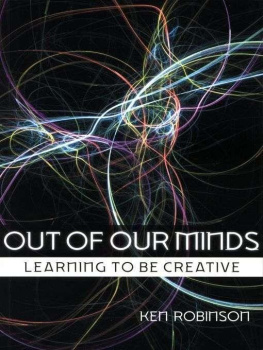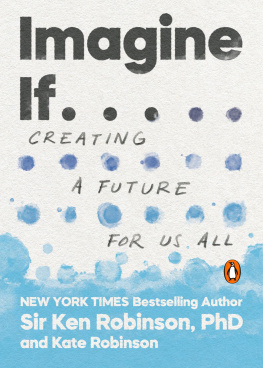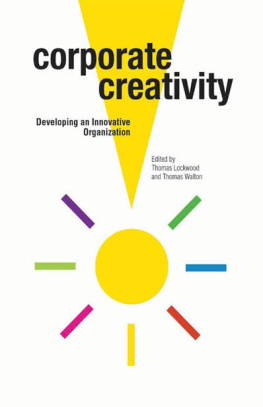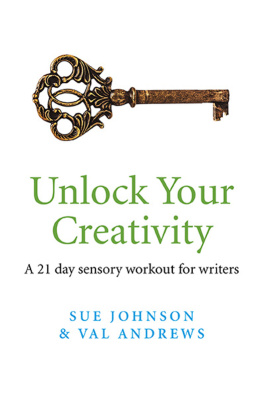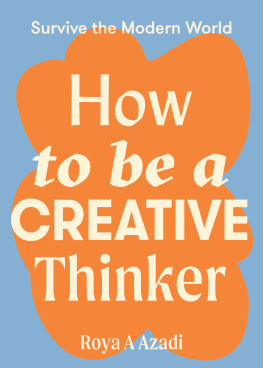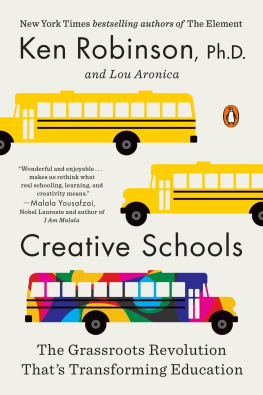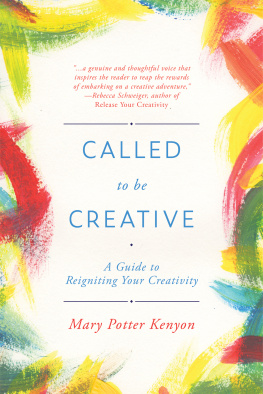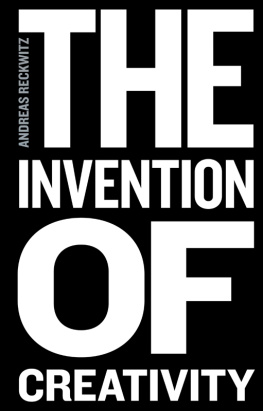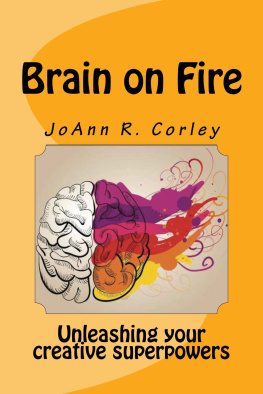Table of Contents

Copyright Ken Robinson 2001
The right of Ken Robinson to be identified as the author of this work has been asserted in accordance with the Copyright, Designs and Patents Act 1988
First published 2001 by
Capstone Publishing Limited
8 Newtec Place
Oxford OX4 1RE
United Kingdom
http://www.capstone.co.uk
Reprinted 2001
All rights reserved. Except for the quotation of short passages for the purposes of criticism and review, no part of this publication may be reproduced, stored in a retrieval system, or transmitted, in any form or by any means, electronic, mechanical, photocopying, recording or otherwise, without the prior permission of the publisher.
CIP catalogue records for this book are available from the British Library and the US Library of Congress
ISBN 1-84112-125-8
Typeset in 10/14 pt Palatino by
Sparks Computer Solutions Ltd, Oxford, UK
http://www.sparks.co.uk
Printed and bound by
TJ International Ltd, Padstow, Cornwall
This book is printed on acid-free paper
Substantial discounts on bulk quantities of Capstone books are available to corporations, professional associations and other organizations. For details telephone Capstone Publishing on (+44-1865-798623) or fax (+44-1865-240941).
For Terry, who makes everything possible.
INTRODUCTION
I have a friend, Dave, who is an actor. He is a large actor, weighing about 20 stone or 280 pounds. He likes to drink beer and has a particular taste for a local beer called Abbot Ale. This is a powerful drink. You could run a small car - or a large actor - on Abbot Ale. Dave regularly drank 12 pints of it a day. Some years ago he developed back pain and went to his doctor, who referred him to a kidney specialist. The specialist examined him and said that he had potentially serious kidney problems. Dave asked what could be causing it. It could be a number of things, said the consultant. Do you drink? David said that he did, socially, and mentioned the Abbot Ale. The specialist told him he would have to stop drinking or face the prospect of renal failure. Dave said he couldnt stop drinking, he was an actor. In that case, said the specialist, why dont you change to spirits? Dave said he thought that spirits could cause cirrhosis of the liver. But you havent come to see me about your liver, said the specialist, I am concerned about your kidneys.
This is an example of what in medicine is called the septic focus, the tendency to look at a problem in isolation from its context. A holistic doctor would recognise that the problem in Daves kidneys was a result of his overall lifestyle; that it was the result of a broader problem. Solving that problem by causing another is no solution at all. The septic focus is evident in business and education every day.
There is a paradox. Throughout the world, companies and organisations are trying to compete in a world of economic and technological change that is moving faster than ever. As the axis shifts towards intellectual labour and services, they urgently need people who are creative, innovative and flexible. Too often they cant find them. Yet governments throughout the world are pouring unprecedented resources into the very process thats meant to develop natural talent and abilities - education. Political leaders emphasise their commitment to promoting creativity and innovation. They are pushing for higher and higher standards, and standards evidently are going up. Certainly children and students seem to be working harder than ever to gain academic qualifications. Why then does there seem to be a gap between the supply and demand for creative, and innovative people. Whats going wrong?
Businesses everywhere are spending large amounts of money trying to make people more creative. Like Daves consultant, they are treating a problem without tackling its real causes. This, therefore, is not a conventional book on business creativity, offering tips for next weeks course. Its about the root causes of the problem rather than a salve for the symptoms of it. Its only by seeing to the bottom of them that a realistic and genuinely effective strategy can be put together. This book offers answers to three questions that are now of vital importance for all companies, organisations and countries that have a serious strategic interest in creativity and innovation.
Why is it essential to promote creativity? National governments, commercial companies and many other organisations are emphasising as never before the essential need to promote creativity and innovation. Why is it essential to do this? What is the price of failure? Why is it necessary to develop creativity? Why do so many adults think theyre not creative (and not very intelligent) and that other people are? Most children are buzzing with ideas. What happens to them as they grow up? Whats the real underlying problem? What is involved in promoting creativity? What is creativity, anyway? Is everyone creative or just a select few? Can creativity be developed and, if so, what can organisations do immediately to make the most of their creative resources? What are the benefits of success?
Creativity is often seen as a purely individual performance. It comes from people who just happen to be creative, or from departments whose role is to be creative. Most companies keep their creatives in separate departments: theyre the people who wear jeans and dont wear ties and come in late because theyve been struggling with an idea. This book argues for a completely different approach, that:
everyone has creative capacities, but they often do not know what they are;these capacities are the greatest resource available to an organisation; and thatdeveloping and exploiting creative capacities calls for a systemic strategy to generate a culture of innovation across the whole organisation including - but not only - the creative departments.
Organisations face three challenges in making the most of their creative potential and human resources. The first is to understand the real nature of creativity. This means countering the many misconceptions that are now blocking progress. The second is to implement a systemic strategy for developing individual creative capacities. There are techniques for doing this, which build on a number of common principles. Creativity can be developed, but it must be done sensitively and well. Most people do not know what their creative capacities are and are worried about the processes involved in finding out. Third, there must be a systemic strategy to facilitate and reward creative output. Occasional courses in creative thinking have limited value. Like rain-dancing, they underestimate the nature of the problems they are trying to solve.
One of the most fundamental problems is the very process thats meant to develop our natural abilities - education. Companies and organisations are trying to fix a downstream problem that originates in schools and universities. It would be naive to think that education is simply a process of developing our natural abilities and rewarding achievements: that schools, colleges and universities simply sort out the intellectual sheep from the goats; that intelligent students do well and the less intelligent dont. Education doesnt just follow the natural grain of young peoples abilities; it sorts them through two different filters. The first is economic : education categorises people on implicit assumptions about the labour market. The second filter is intellectual: education sorts people according to a particular view of intelligence. The problem we face now is that the economic assumptions are no longer true and the intellectual filter screens out some of the most important intellectual abilities that children possess. There are drastic consequences for the development of creative abilities. This was always a problem, but now its getting critical.
Next page
